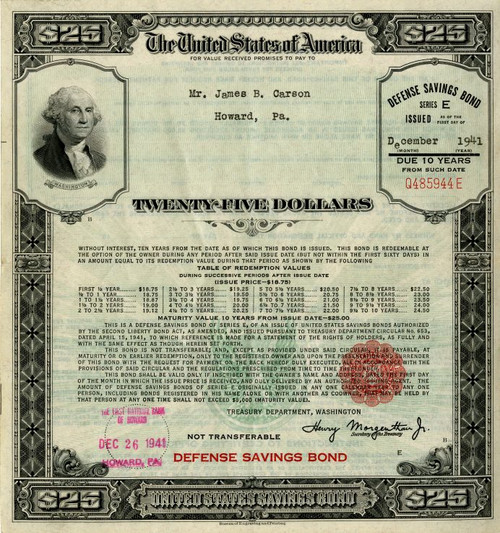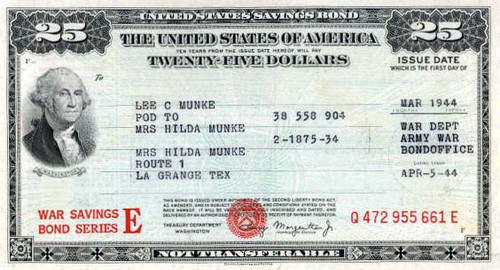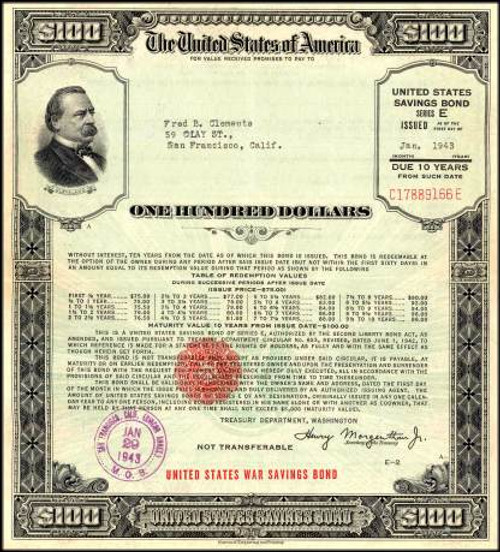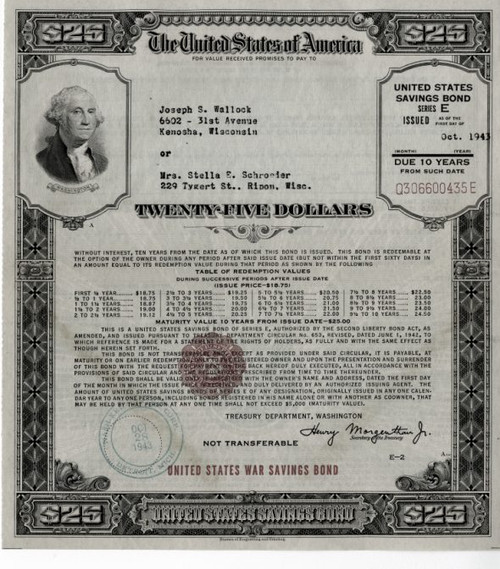-

U.S. Armed Forces Leave Bond, 1946, 2.5% Interest Payable in 5 Years.
Was: $395.00Now: $325.00 -

-

U.S. $1000 Treasury Bond, 1983, 11 7/8% Series G-1991 Registered Bond., Due October 15, 1991,
Was: $2,995.00Now: $2,495.00 -

Scripophily - Stock Certificates
United States Savings Bond $25 Series E - 1949
Was: $59.95Now: $39.95 -

$100 United States Savings Bond ( Uncancelled IBM Punch Card Stock) - 1970's
Was: $79.95Now: $49.95 -

-

-

-

United States $25 Dollar Defense Savings Bond (Large Size) - World War II - 1942
MSRP: $189.95$129.95 -

U.S.War Savings Certificate Booklet Series of 1919
MSRP: $129.95$99.95 -

United States of America $50 WWII War Savings Bond Series E - 1945, 1948
MSRP: $149.95$99.95 -

United States $200 Dollar Savings Bond (Rarest denomination) - Washington, D.C. 1951
MSRP: $1,195.00Was: $895.00Now: $695.00 -

United States $25 Savings Bond - WWII War Bond 1944 1945
MSRP: $99.95$79.95 -

United States $25 Uncancelled Series E Savings Bond -1946 to 1952
MSRP: $69.95Was: $49.95Now: $39.95 -

United States $100 War Savings Bond Series - 1946
MSRP: $129.95$99.95 -

United States $100 War Savings Bond - Large Size - 1942 - 1943
MSRP: $249.95$199.95 -

Sixth War Loan Drive War Finance Committee for Ohio - 1944
MSRP: $129.95$99.95 -

United States $100 War Savings Bond Series E (Uncancelled) - 1944,1945,1946
MSRP: $169.95$129.95 -

United States $25 War Savings Bond - Large Size - WWll 1942,1943
MSRP: $99.95Was: $99.95Now: $69.95 -

$100 Defense Savings Bond 1942
MSRP: $395.00$295.00

